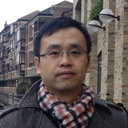The gene for paroxysmal non-kinesigenic dyskinesia encodes an enzyme in a stress response pathway.
Հիմնաբառեր
Վերացական
Paroxysmal non-kinesigenic dyskinesia (PNKD) is characterized by spontaneous hyperkinetic attacks that are precipitated by alcohol, coffee, stress and fatigue. We report mutations in the myofibrillogenesis regulator 1 (MR-1) gene causing PNKD in 50 individuals from eight families. The mutations cause changes (Ala to Val) in the N-terminal region of two MR-1 isoforms. The MR-1L isoform is specifically expressed in brain and is localized to the cell membrane while the MR-1S isoform is ubiquitously expressed and shows diffuse cytoplasmic and nuclear localization. Bioinformatic analysis reveals that the MR-1 gene is homologous to the hydroxyacylglutathione hydrolase (HAGH) gene. HAGH functions in a pathway to detoxify methylglyoxal, a compound present in coffee and alcoholic beverages and produced as a by-product of oxidative stress. Our results suggest a mechanism whereby alcohol, coffee and stress may act as precipitants of attacks in PNKD. Stress response pathways will be important areas for elucidation of episodic disease genetics where stress is a common precipitant of many common disorders like epilepsy, migraine and cardiac arrhythmias.


